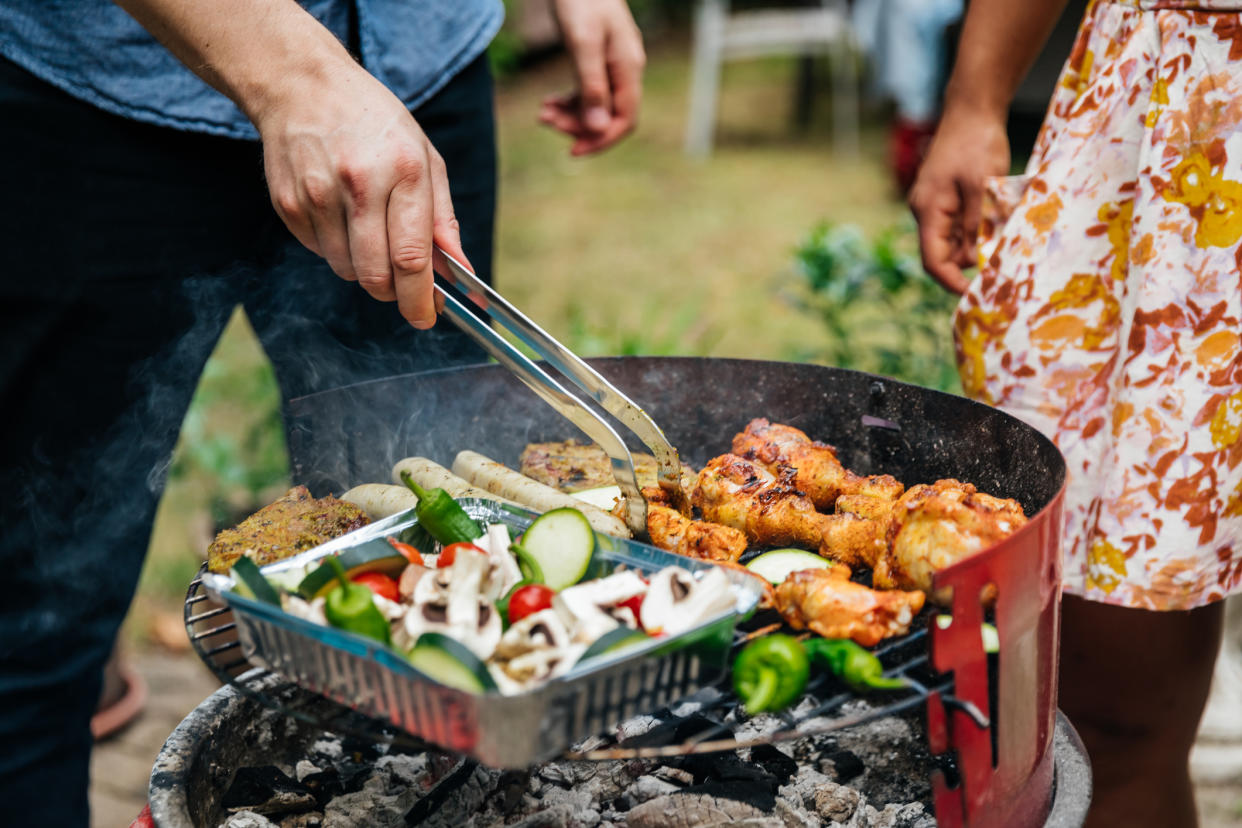Food Safety Tips You Should Know as Summer Heats Up

A close up of a man cooking different foods on a barbecue. Credit - Getty Images
With Memorial Day weekend fast approaching, the start of the summer is in sight. As the weather gets hotter and people start eating and grilling outside again, it’s important to make sure that your food remains safe to eat. The U.S. Department of Agriculture’s Food Safety and Inspection Service released on Tuesday four important tips to keep people safe from foodborne illness.
“The bacteria that cause foodborne illness love the summertime as much as we do because they thrive and multiply quickly in warmer temperatures. This causes illnesses to spike during the summer,” Under Secretary for Food Safety Dr. Emilio Esteban said in a press release. “As we all spend more time outside, it is important to remember these food safety steps to keep your friends and family safe.”
Wash your hands
We heard it all the time during the COVID-19 pandemic, and it remains a good rule of thumb. Wet your hands with running water, lather with soap, scrub for 20 seconds, rinse, and dry. If you don’t have access to running water, use hand sanitizer or moist towelettes that have at least 60% alcohol.
Pack your perishable foods safely
If you’re packing food to prepare and eat outside, store your perishables in coolers or insulated containers with cold sources to keep food at a safe cold temperature below 40°F. Cold sources could include ice, frozen gel packs, and frozen beverages that don’t need to be refrigerated for safety, such as water bottles and iced tea.
It’s important to keep coolers out of the sun; once outside, place them in the shade so they can maintain a safe cold temperature. Full coolers will keep your perishables cold and safe for longer than half-full ones. Insulated bags can also help with keeping perishables safe in the event the cooler can’t be filled to capacity.
Be mindful of how often you open coolers, as the temperature inside may fluctuate and create an unsafe environment for your perishable food.
Read More: Do You Need More Sunscreen When It’s Hot Outside?
Don’t let foods reach the “Danger Zone”
The “Danger Zone” is the temperature range of 40° and 140°F, which is when bacteria multiply quickly. You should avoid exposing your perishable foods to the “Danger Zone” to maintain food safety.
Cold foods should be kept at 40°F or below by keeping them in the refrigerator, cooler, insulated container, or over ice. Hot foods should be kept over 140°F by placing them on the grill, in a heated chafing dish, slow cooker, or warming tray.
Bring an appliance thermometer—used traditionally for the fridge or the freezer—so you can make sure foods in the cooler stay below the “Danger Zone.”
Follow the “Two-Hour Rule”
Foods that are not in the “Danger Zone” or don’t sit out for more than two hours are safe to keep. Any other food items should be treated as unsafe to eat and thrown out. The best rule to remember: When in doubt, throw it out.
Contact us at letters@time.com.

